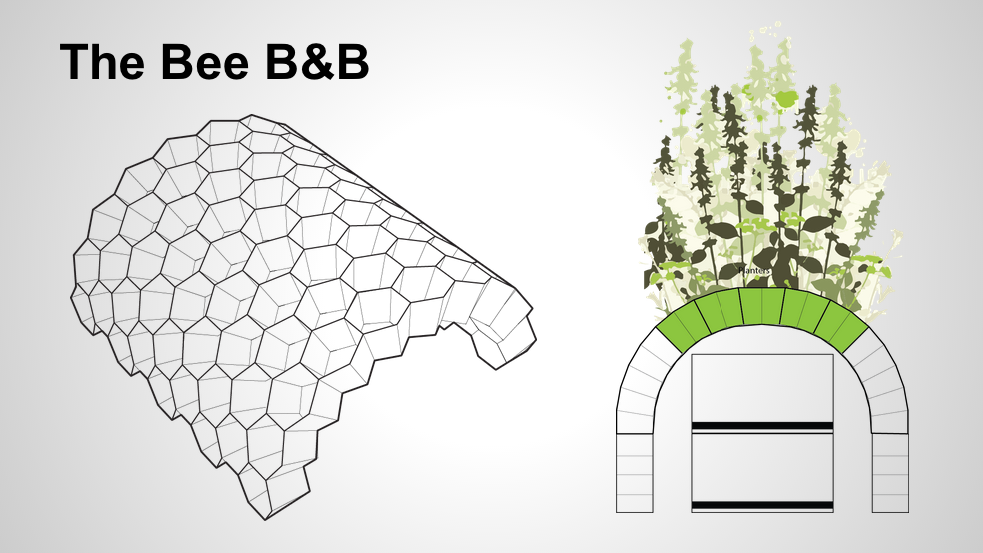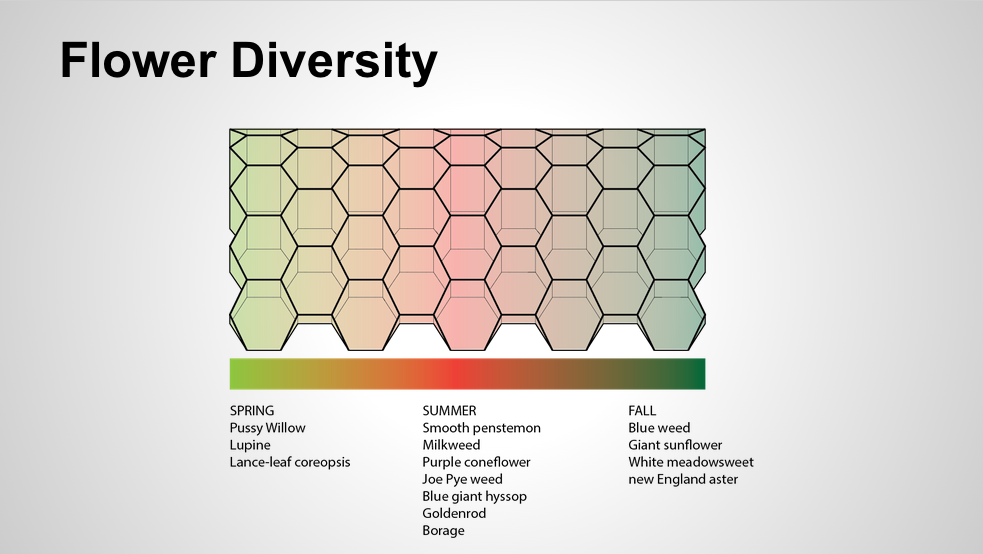Bee BnB
Creating Bee Sanctuaries in Urban Environments
By Adam Quinn, Colin Narver & Xuedi Chen
Bees In the Winter
Almost a third of all of the managed bee colonies in the United States — 31.1 percent — didn’t survive last winter. Honeybee colonies which are suffering from poor nutrition become more vulnerable to disease and other stress factors in the winter.
If colonies are smaller as a result of the poor summer, they can also find it harder to survive the winter as they cluster together in cold weather and can starve if the smaller cluster is not close to food stores within the hive. Studies have shown that urban bees have higher winter survival rates. This is due to the overall higher temperature and the fact that there are less pesticides found in the city used for agriculture.




Bees Needs
Bees need access to clean water year round. Also it takes many pounds of honey to survive the winter as it is used for both insulation and food. In order to create the needed honey supply, they need to be stockpiling nectar and pollen during the warmer months. Therefore it is important to plant late in season to provide access to last haul of pollen and nectar before winter.
Adam, Colin and I wanted to some bring attention to these issues through research and design.
The Bee B&B is an add-on to current beehive boxes. Our proposed protective enclosure will provide many amenities to our bees by supplying water and housing flowering plants in planters above the hive. The planters can serve as starter pods for regional wildflowers, a sparse resource in a city where the majority of flowers are non-local and highly curated. We are hoping that having spring and fall flowering plants near the hives will be helpful in their winter survival.


